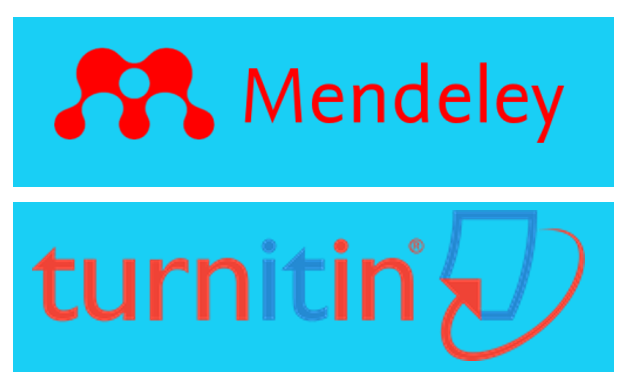Relationship Between Proficiency in Kenyan Sign Language and Signed Exact English and Performance in English by Learners with Hearing Impairment
DOI:
https://doi.org/10.32734/ev1pqa59Keywords:
Hearing Impairment, Kenya Sign Language, Proficiency, Academic Performance, Students with Hearing ImpairmentAbstract
Students with Hearing Impairment (HI) encounter various challenges in learning due to their hearing loss, significantly impacting their academic performance, particularly in exams such as the Kenya Certificate of Secondary Education (KCSE). This study aims to explore the correlation between proficiency in Kenyan Sign Language (KSL) and Signed Exact English (SEE) with English performance among HI learners. Conducted in four special secondary schools for the deaf in Kenya's Nyanza region, the study involved 48 participants, including 33 Form 3 students, 7 English teachers, 4 Curriculum Support Officers, and 4 School Principals. Utilizing a qualitative multiple case study design, the research employed purposive sampling to select schools, saturated sampling for English teachers, and stratified sampling for Form 3 students. Data collection methods included in-depth interviews, focus group discussions, classroom observations, and document analysis. Thematic analysis was used to analyze the data, revealing that pre-lingual HI students, deaf before speech development, exhibit greater proficiency in KSL than SEE and Standard English (SE). Conversely, post-lingual HI students, deafened after speech acquisition, may struggle with KSL initially but tend to excel in SEE due to their prior speech development. Over time, post-lingual students may achieve proficiency in KSL after integrating into the Deaf community.
Downloads
References
Afrin, S. (2016). Writing problems of non-English major undergraduate students in Bangladesh: An Observation. Open Journal of Social Sciences, 4, 104-115. https://dx.doi.org/10.4236/jss.2016
Adoyo, P. A. O. (2010). Application of South African Sign Language (SASL) in a Bilingual-Bicultural Approach to Educating the Deaf [Unpublished PhD Dissertation, University of Free State].
Akmajian, A., Demers, R. A., Farmer, A. K., & Hamish, R. M. (2001). Linguistics: An introduction to language and communication. Cambridge: M.T. Press.
Alamri, G. (2017). Teachers’ beliefs and attitudes about Saudi Arabia sign language. Retrieved from ProQuest Dissertations & Theses Global database.
Ali, B., Okwaro, R., & Adera, T. A. O. (2003). Elementary sign language part II. Nairobi: Kenya Institute of Special Education.
Allen, T. E. (1994). Who are the deaf and hard-of-hearing students leaving high school and entering postsecondary education? [Unpublished manuscript]. Gallaudet University Center for Assessment and Demographic Studies. Retrieved from http://research.gallaudet.edu/AnnualSurvey/whodeaf.php
Bunyasi (2010) Relationship between self-esteem and academic achievement for girls with hearing impairments in Kenya; Unpublished Doctoral Dissertation, Nairobi
Cawthon, S. (2004). Schools for the deaf and the No Child Left Behind Act. American Annals of the Deaf, 149, 314–323. doi:10.1353/aad.2005.0002.
Constitution of Kenya. (2010); Legal Status of Kenyan Sign Language
Diamond, Adele. (2014). Understanding executive functions: What helps or hinders them and how executive functions and language development mutually support one another. The International Dyslexia Association: Perspectives on Language and Literacy. 40. 7-11.
Dodd, R. J., & Sharpley, A. N. (2016). Conservation Practice Effectiveness and Adoption: Unintended Consequences and Implications for Sustainable Phosphorus Management. Nutrient Cycling in Agroecosystems, 104, 373-392. https://doi.org/10.1007/s10705-015-9748-8
Fafunwa, B.A (1990). Using National Languages in education: A Challenge to African Educators.In: African Thoughts on the Prospects of Educational for All. Dakar: UNESCO/UNICEF, 97-110
Fender, M. (2008) Spelling knowledge and reading development: Insights from Arab ESL learners. Reading in a Foreign Language April 2008, Vol 20, No. 1
Gapur, A. (2024). Disfemisme : dalam ragam bahasa pria Jepang pada manga. Abdul Media Literasi. https://amedialiterasi.com/index.php/Book/article/view/12
Gargiulo, R. M. (2006). Special education in contemporary Society. An Introduction to Exceptionality. New York: Thomson Wadsworth.
Geneva Conference (2008); Sixty-first World Health Assembly, Geneva, 19-24 May 2008. Resolutions and decisions
KICD (2013); Kenya Institute of Curriculum Development No. 4 development in basic and tertiary education and training;
KIE, (2004). Secondary syllabus for learners with hearing impairment, Kenya Sign language. Nairobi: KIE.
KIE, (2008). Let’s learn sign language standard five. Nairobi: Kenya Institute of Education.
KIE (2002). Kenyan Sign Language for Schools: Fourth Draft. Nairobi: Kenya Institute of Education.
Kimani, C. (2012). Teaching Deaf Learners in Kenyan Classrooms. Unpublished PhD Thesis; University of Sussex
Kirk, A.S, Gallagher, J.J and Anastasiow, J.N (2007), Educating Exceptional Children (8thed.). New York, Boston: Houghton Mifflin Company.
Lucas, C. (2001). The Sociolinguistics of Sign Languages. Cambridge: Cambridge University Press.
Ludago, T. (2014). Practices, Challenges and Opportunities of Inclusive Education Implementation in Kambata Tambaro Zone, Ethiopia. OALib. 07. 1-29. 10.4236/oalib.1105989.
Lewis, M. P. (Ed.) (2009). Ethnologue: Languages of the World (16th ed.). Dallas, Texas: SILInternational. http://www.ethnologue.com/16
MacCracken, W. and Suttherland, H (2013). Deaf-Ability Not Disability. A Guide for parents of Hearing-Impaired Children. Clevedon: Billing & Sons Ltd.
Marshchark, M. (2001). Language development in children who are deaf. A research synthesis project Forum, National association of state directors of special education and the office of special programs, US: Development of education.
Marshchark, M. (2007). Raising and educating a deaf child. New York: Oxford University press.
Marshchark, M., Schick B., & Spencer, P. (Eds) (2006). Understanding sign language development of deaf children. Advances in sign language development of deaf children (PP 3-18) New York: Oxford University press.
Marshchark, M., Sapere, P., Convertino, C., Seewagen, R., & Maltzen, H. (2004). Comprehension of sign language interpreting: Deciphering a complex task situation. Sign Language Studies, 4,345-368.
Misbah, N.H., Mohamad, M., Yunus, M. & Ya’acob, A. (2017). Identifying the factors contributing to students’ difficulties in the English language learning. Creative Education, 8, 1999-2008. https://doi.org./10.4236/ce.2017.813136.
Moses M., Yunus, M. & Ya’acob, A. (2017). Identifying the factors contributing to students’ difficulties in the English language learning. Creative Education, 8, 1999-2008. https://doi.org./10.4236/ce.2017.813136
Mitchell, R. E. (2008). Academic achievement of deaf students. In R. C. Johnson & R. E. Mitchell (Eds.), Testing deaf students in an age of accountability (pp. 38–50). Washington, DC: Gallaudet University Press
Moores, D.F. (2001). Educating Deaf Psychology Principles; Educating Children who are deaf or hard of hearing: Assessment. Washington: Gallaudet University Press.
Niederberger Costello, Nathalie & Prinz, P. (2005). Does the knowledge of a natural sign language facilitate deaf children's learning to read and write? 57. 285-297.
Nabea, W. (2009). Language Policy in Kenya: Negotiation with Hegemony. The Journal of Pan African Studies, vol 3(1), 121-138.
Ndung’u C.W. (2013) English Language Literacy for Deaf Learners. A paper presented in the First International Research and Innovation Conference at Mount Kenya University, 28tt– 30th August, 2013 at Safari Park Hotel- Nairobi Kenya
Ndurumo, M. M. (2008). African Annals of the Deaf Issue No.2008-01.
Ndurumo, M. M. (1993) Exceptional Children –a Developmental Consequences and Intervention. Nairobi: Longman Kenya Ltd.
Ndurumo, M. M. (1986). An analysis of the recommendations to designate schools for the deaf based on children’s oral competence: Kenya Institute of Education.
Niederberger Costello, Nathalie & Prinz, P. (2005). Does the knowledge of a natural sign language facilitate deaf children's learning to read and write? 57. 285-297
Ogada, R., Oracha, P., Matu, P. M. and Kochung’, E. J. (2012). Strategies Used in Teaching English Composition to Learners with Hearing Impairments in Nyanza. In Journal of Emerging Trends in Educational Research and Policy Studies 3(5) 638-645 (c) Scholar link Research Institute Journals, 2012 (ISSN: 2141-6990)
Ogada, R., Oracha, P., Matu, P. M. and Tyeng’o, M. (2014). Languages Used in Teaching English Composition to Learners with Hearing Impairments in Nyanza Province, Kenya. International Journal of Social Science and Entrepreneurship, 1(12), 1-11
Otieno P. (2010). Teaching/Learning Resources and Academic Performance in Mathematics in Secondary Schools in Bondo District of Kenya. Asian Social Science. 6. 10.5539/ass.v6n12p126.
Ruth S.C (2018) Impact of Kenya Sign Language on Written English Grammar Among Learners who are Deaf in Upper Primary Classes in Nakuru Region, Kenya. Unpublished Master’s Thesis.
Siima, S. B. A. (2011). Teaching of Reading and Writing to Deaf Learners in Primary Schools in Uganda. University of Oslo, Norway. Retrieved from https://www.duo.uio.no/bitstream/handle/10852/32261/thesis.pdf?sequence=1 on February 26th, 2023.
Walter, G. G. (2003). Lexical abilities to hearing and hearing-impaired children. American annals of the deaf 123, 976-982.
Wamae, G. (2002). Linguistic challenges facing the hearing-impaired learners in Kenya. Unpublished paper presented at the Department of English and Linguistics, Kenyatta University, Nairobi.
Wang, M., & Geva, E. (2003). Spelling Performance of Chinese ESL Children:Lexical and Visual-Orthographic Processes. Applied Psycholinguistics, 24, 1-25
Woolfolk Hoy, A., Hoy, W. K., & Davis, H. A. (2009). Teachers’ Self-Efficacy Beliefs. In K. R. Wentzel & A. Wigfield (Eds.), Handbook of Motivation at School (pp. 627– 653). NewYork: Routledge.
Zambian National Association of the Deaf -ZNAD (2001); Zambian Sign Language.
Downloads
Published
Issue
Section
License
Copyright (c) 2024 Gregory Nyongesa (Author)

This work is licensed under a Creative Commons Attribution 4.0 International License.
- Authors agree to publish their work under the Creative Commons Attribution 4.0 International (CC BY 4.0) license.
- Authors retain copyright to their work and may reuse or distribute it.
- HUMANIOLA reserves the right to request revisions and make final publication decisions.
- Authors are responsible for ensuring that their work does not infringe upon third-party copyrights.
- Archiving in digital repositories may be done for long-term access and preservation.





